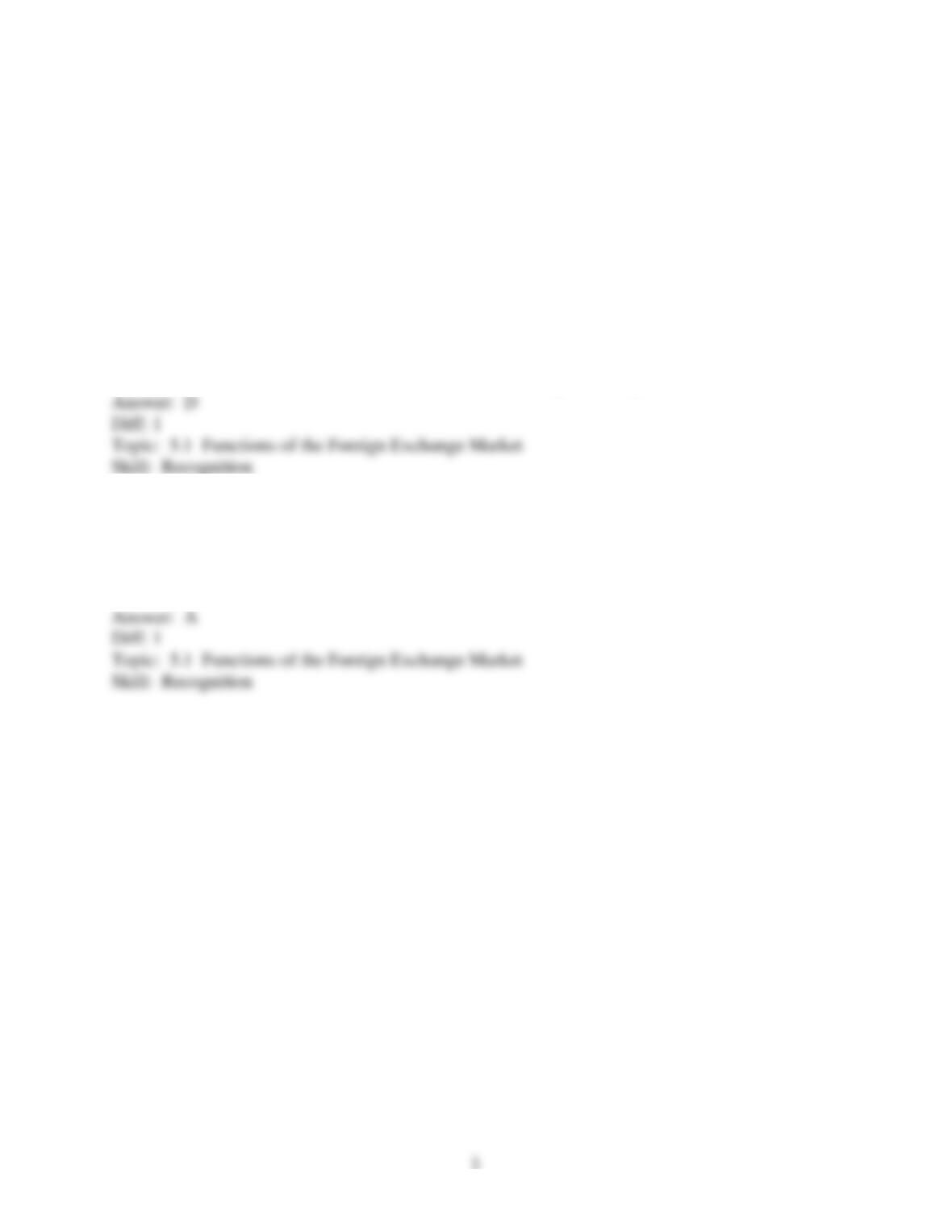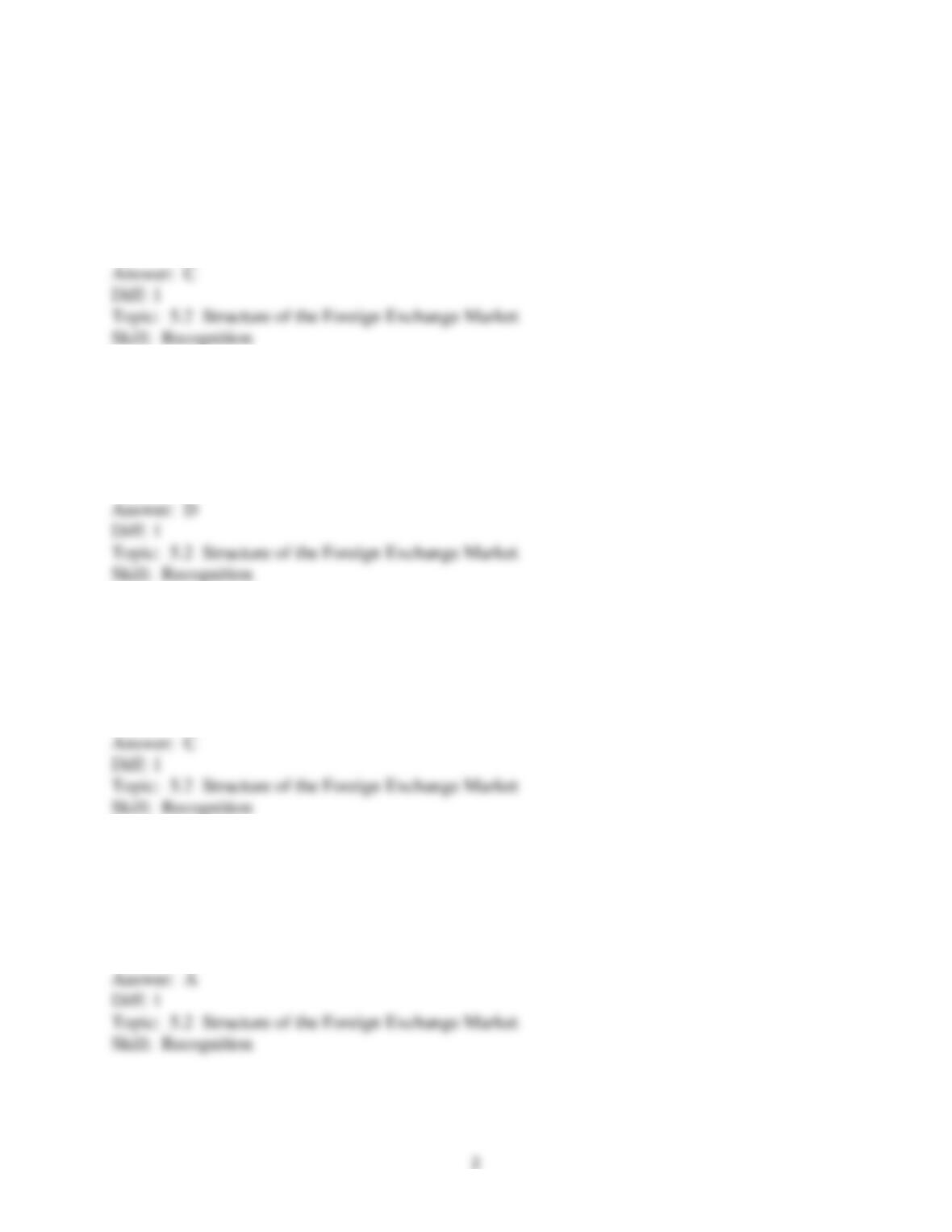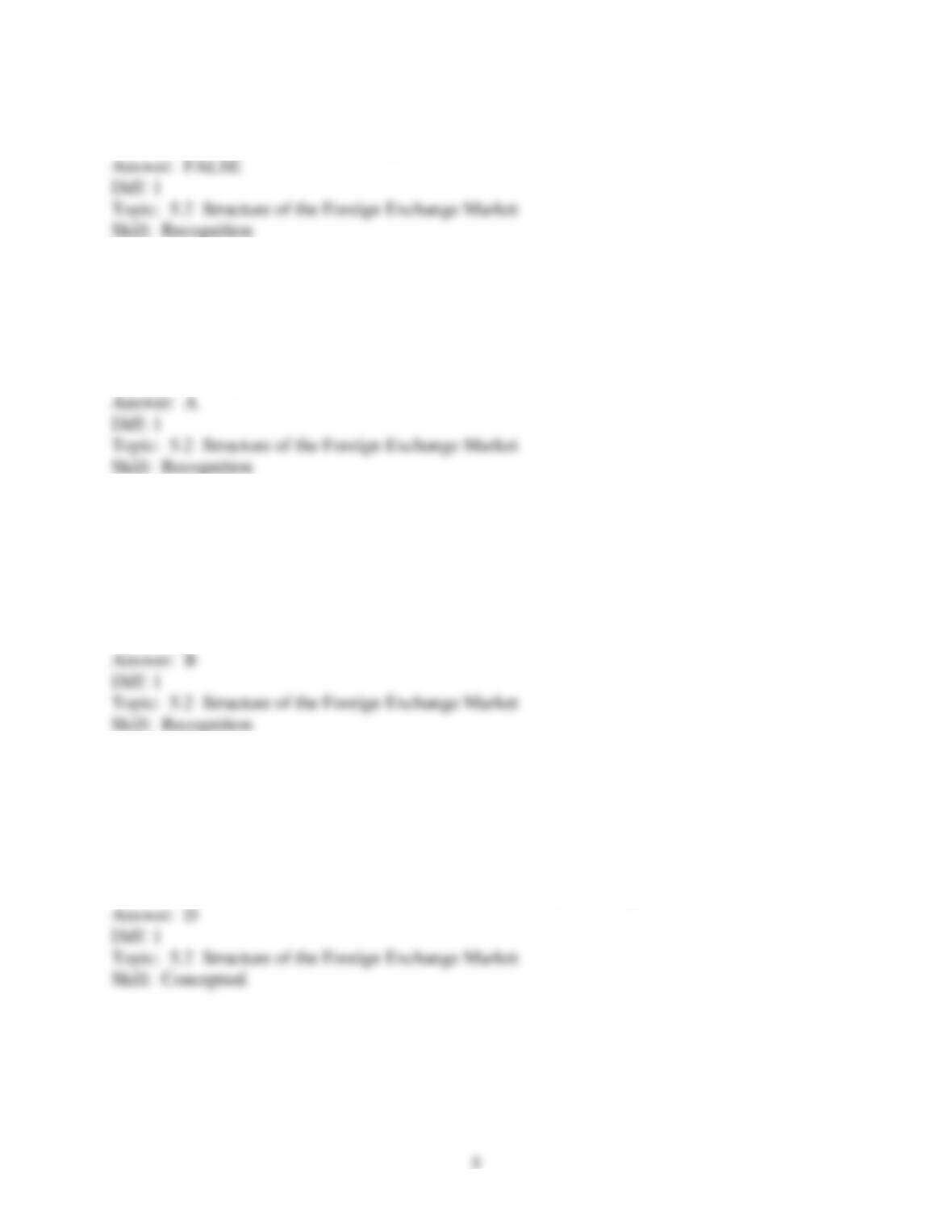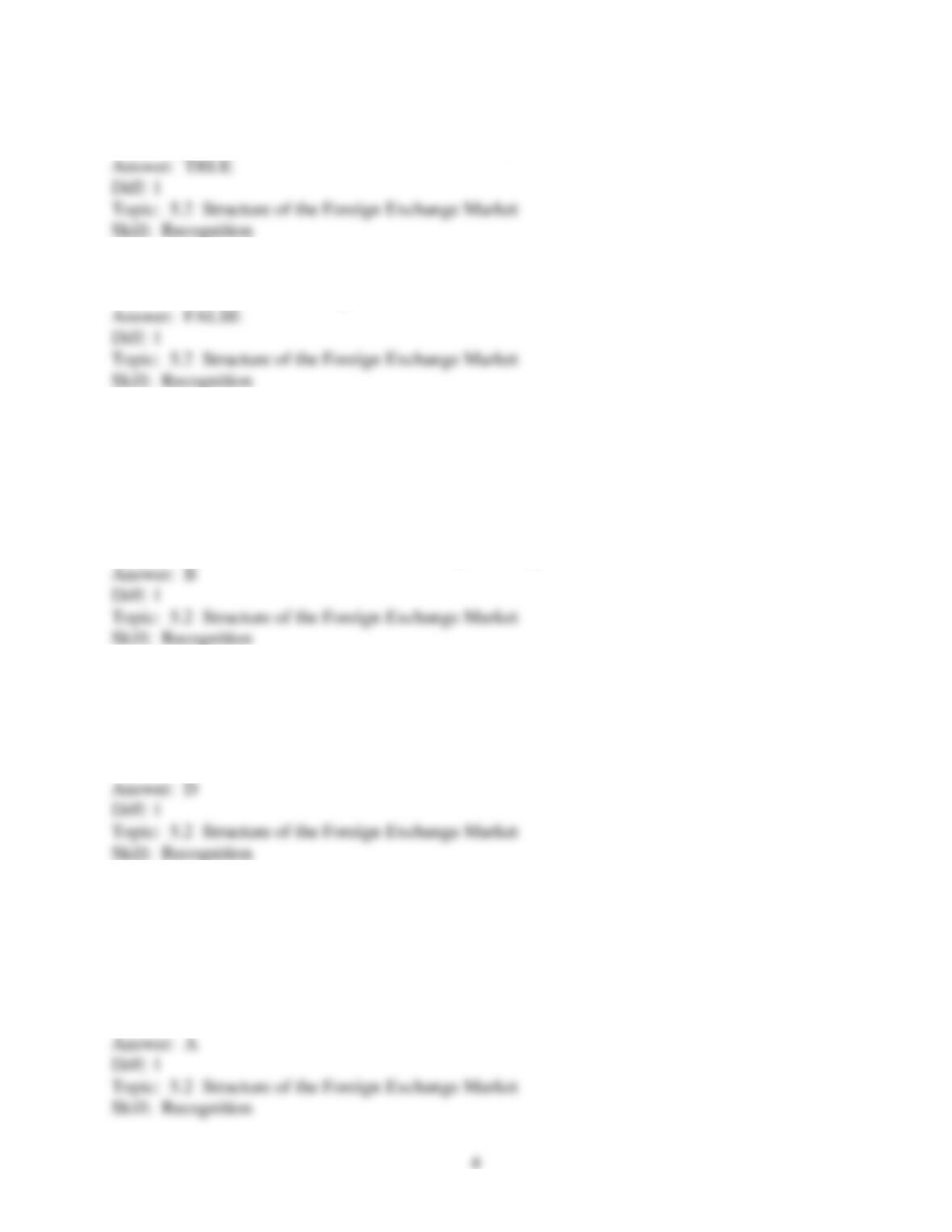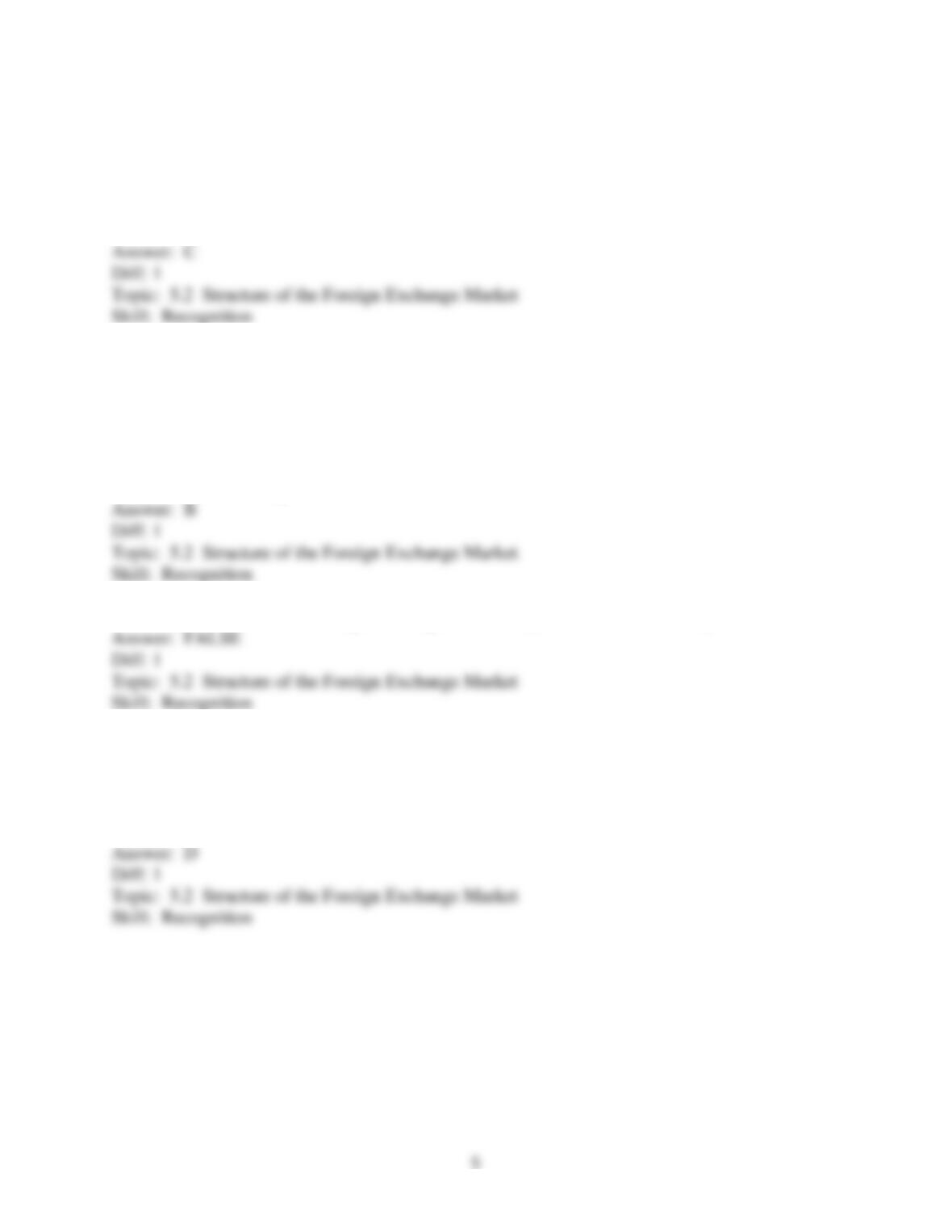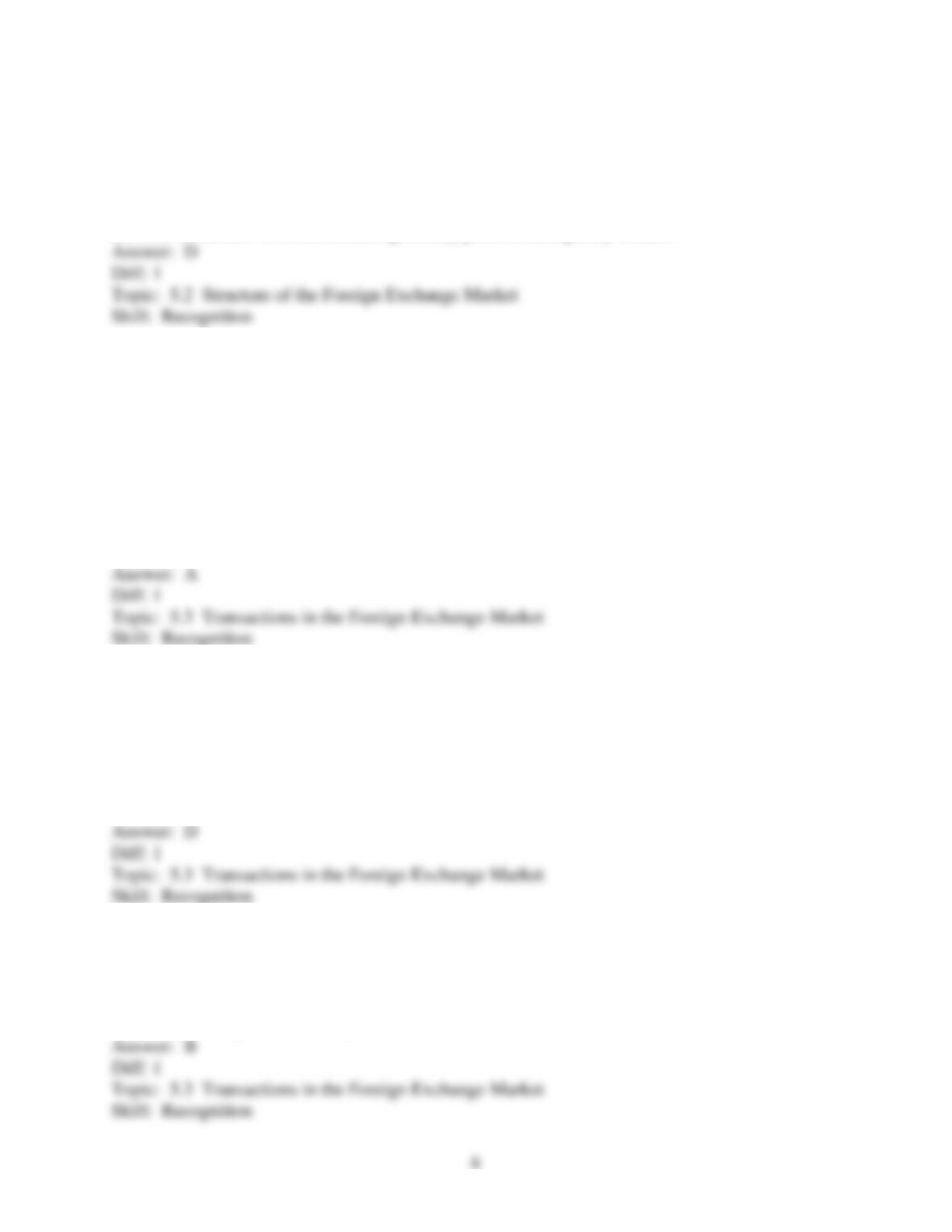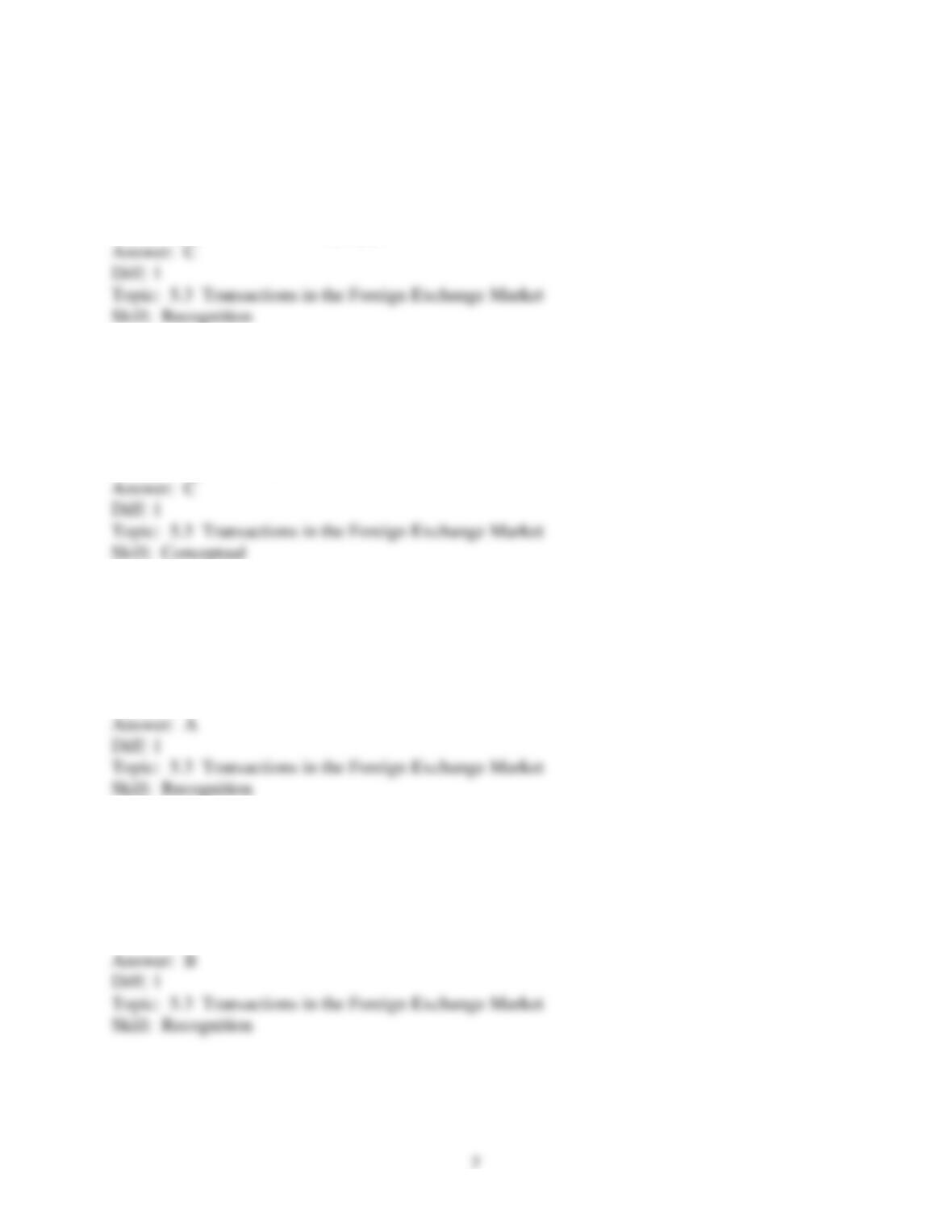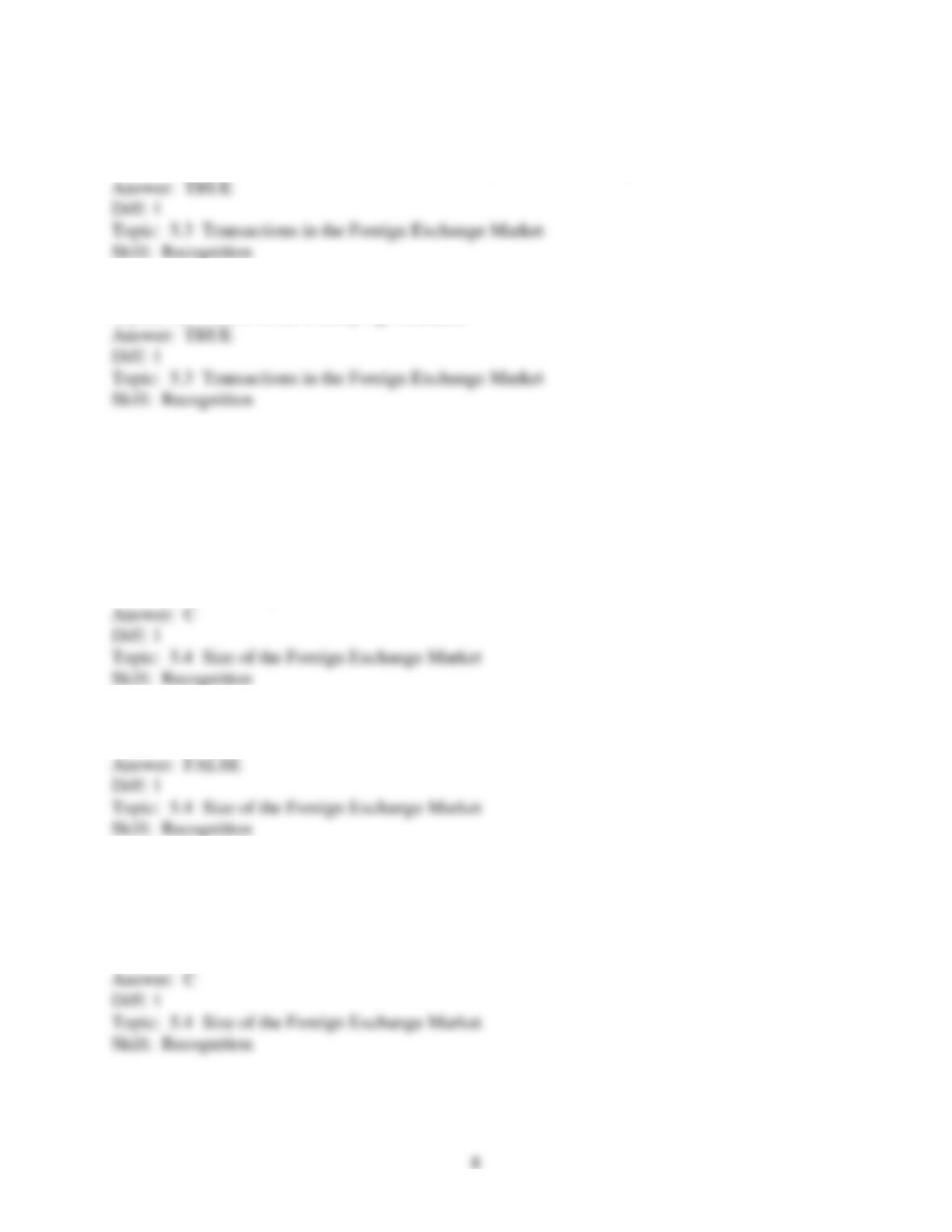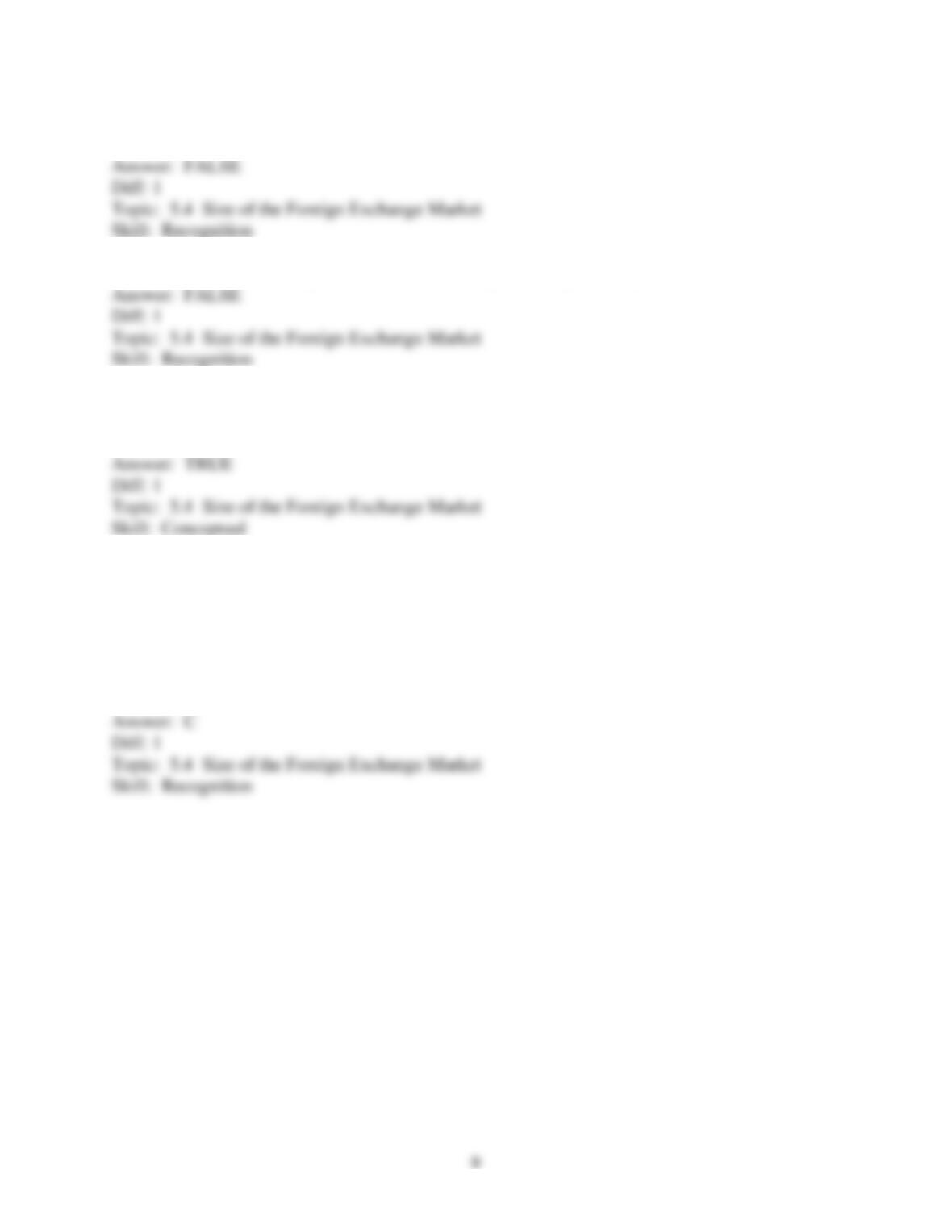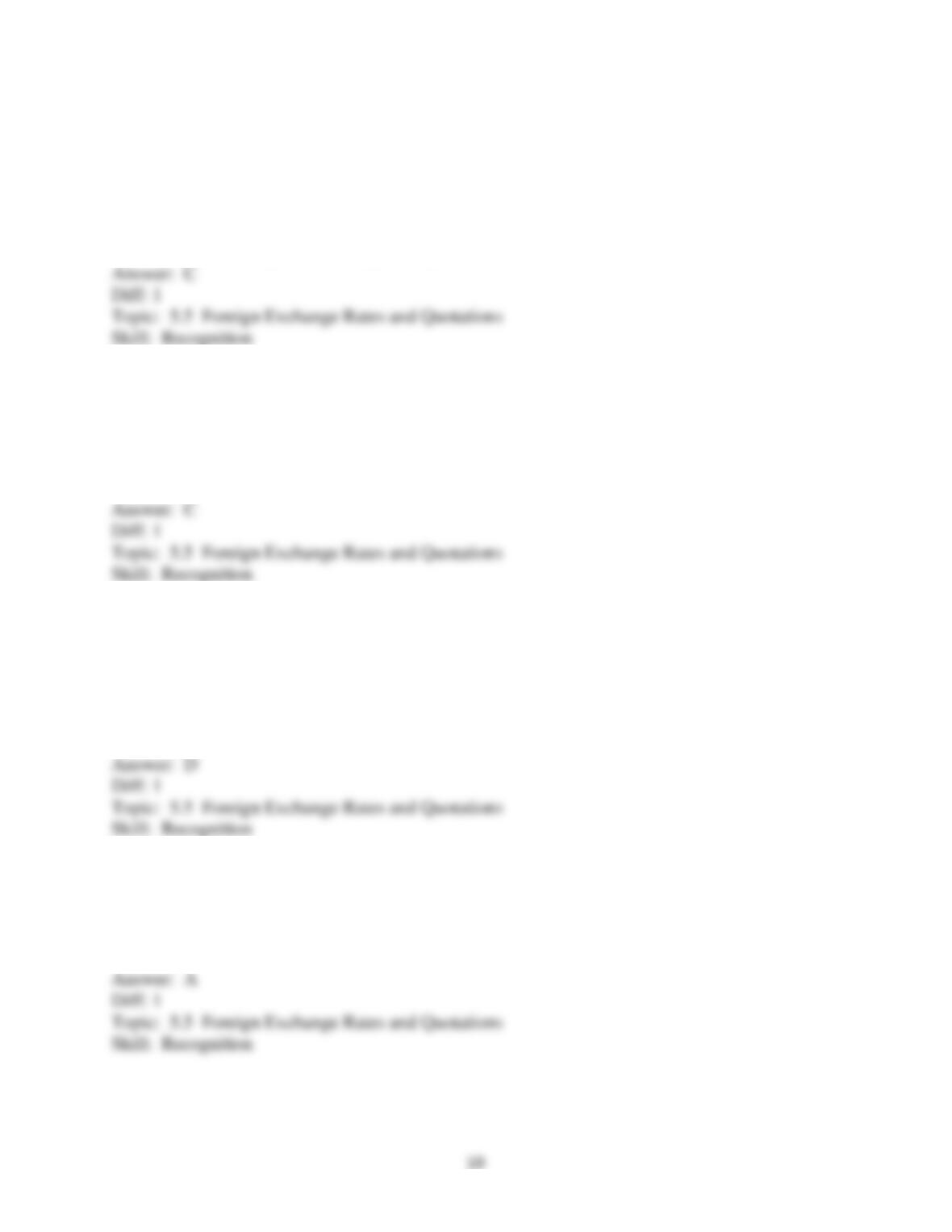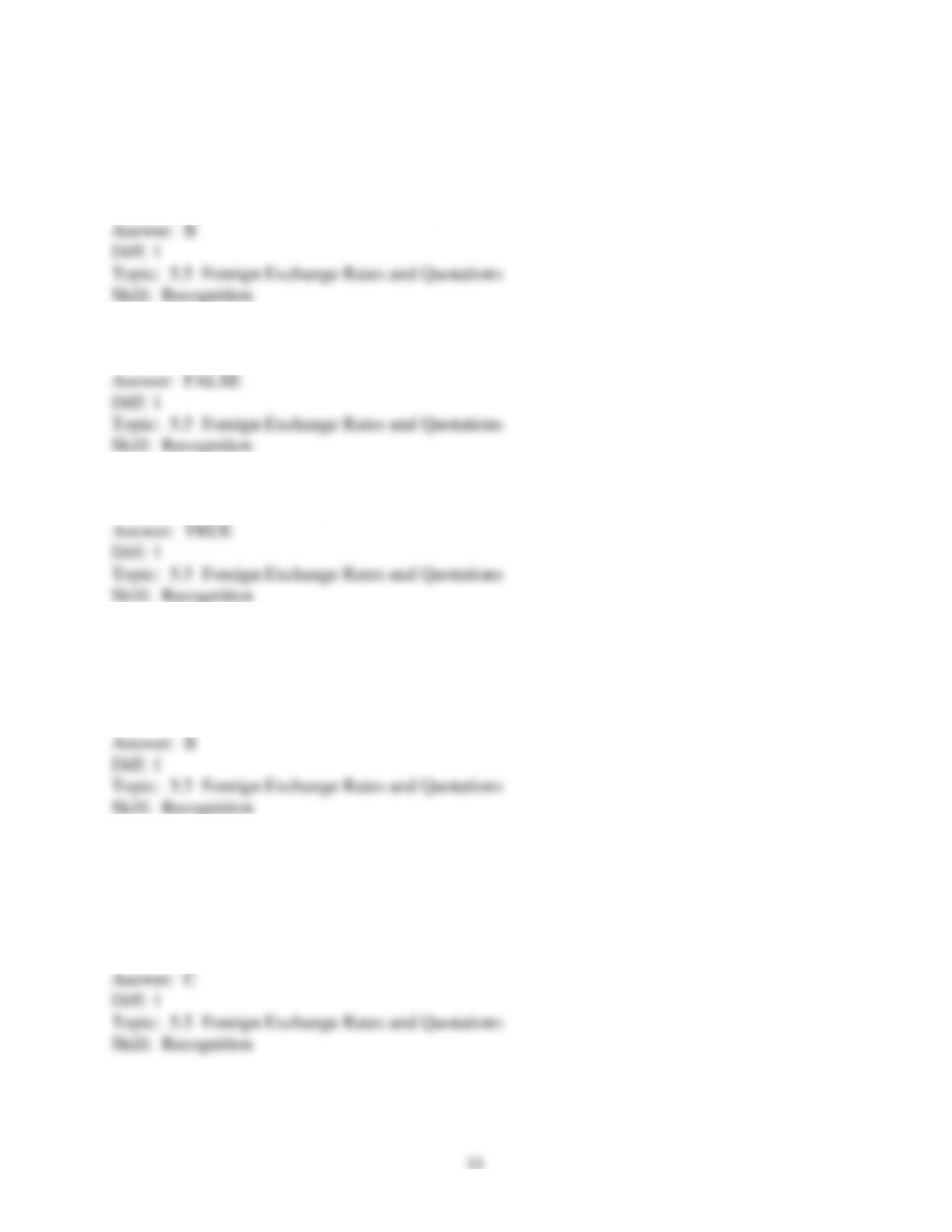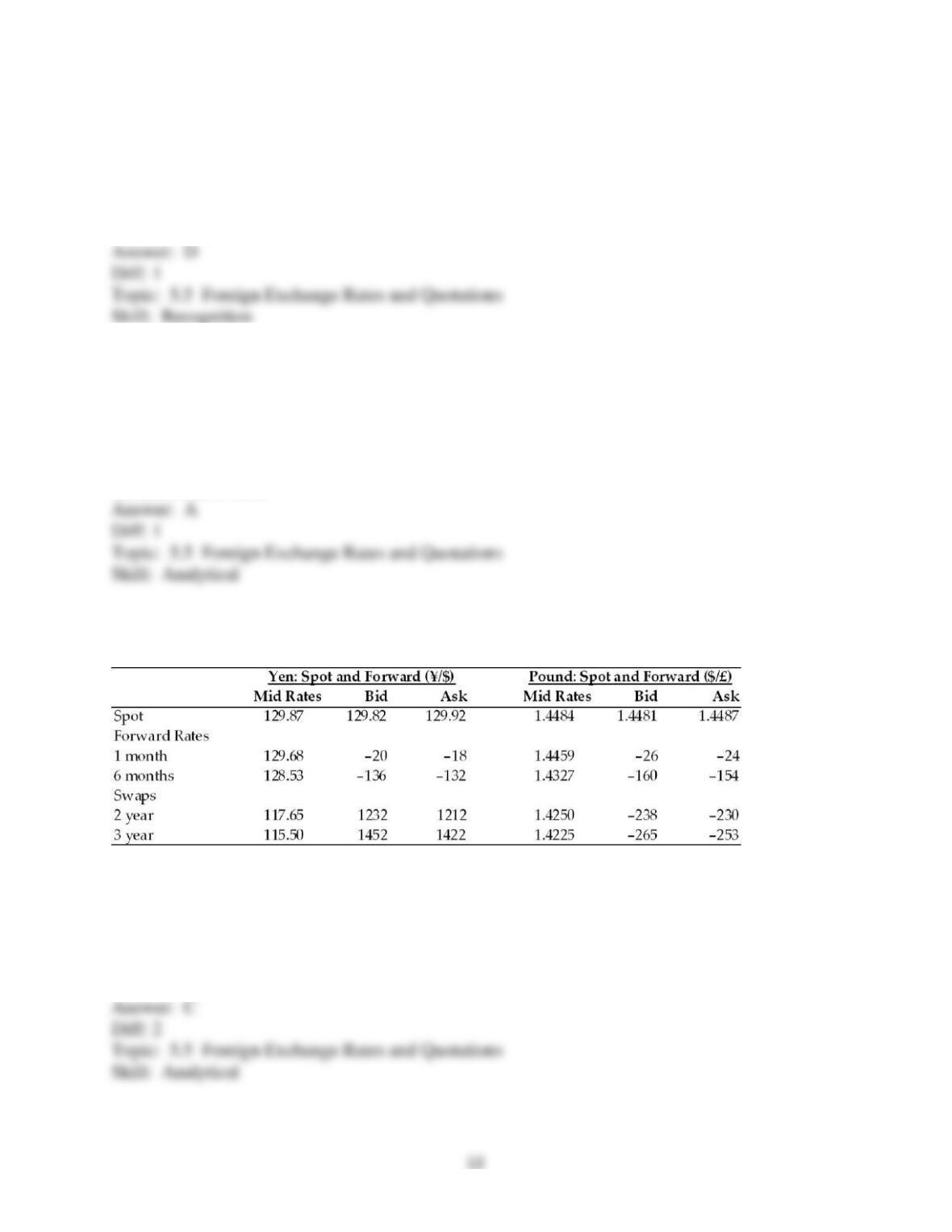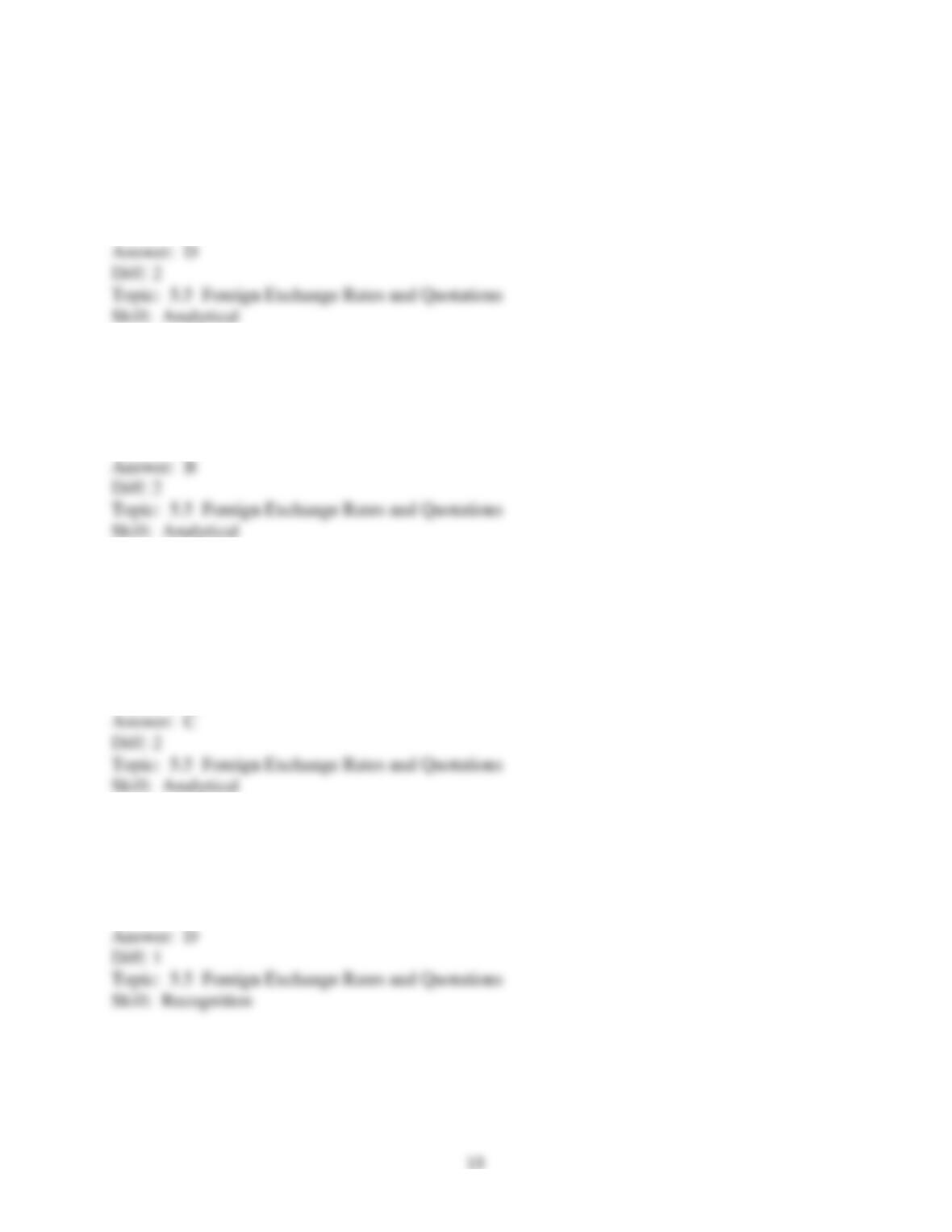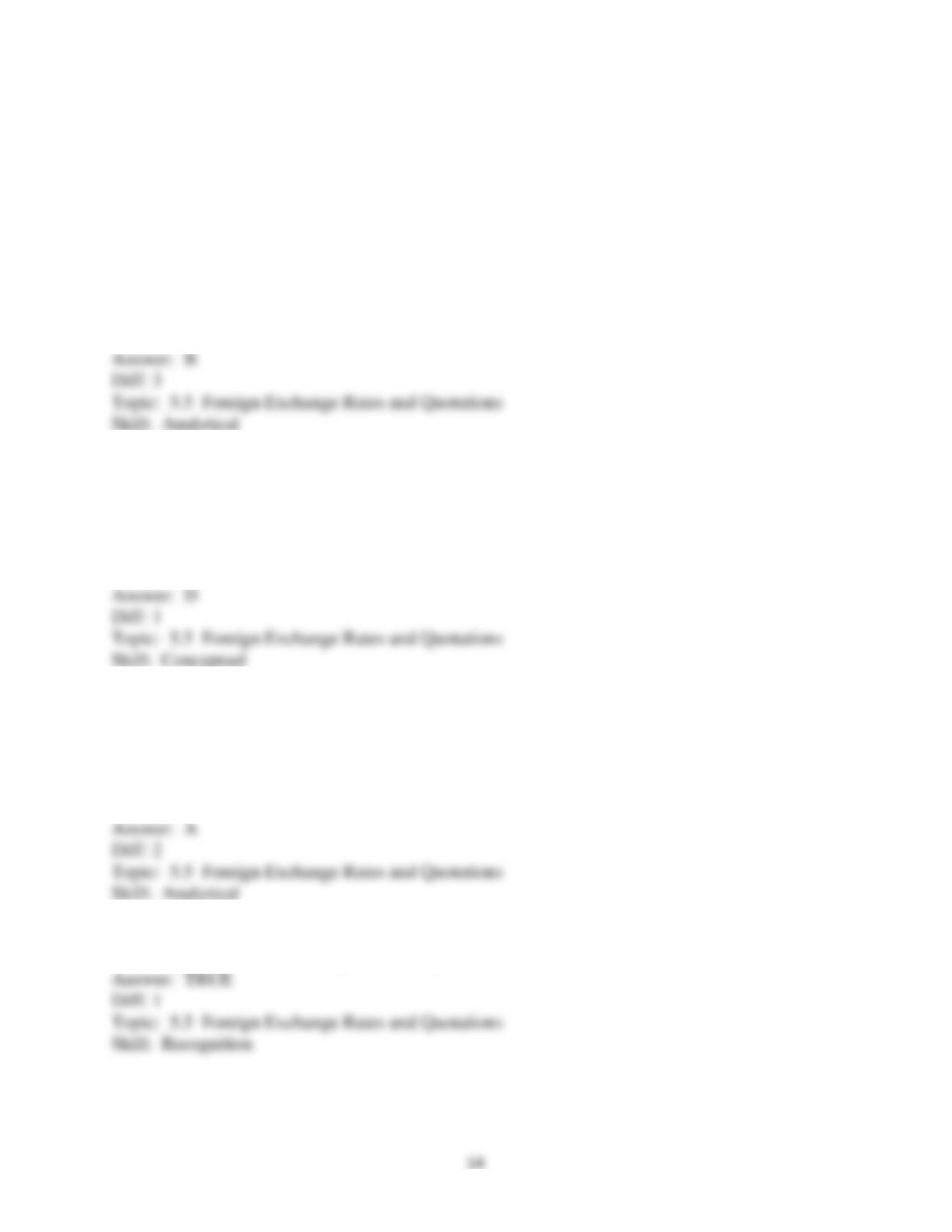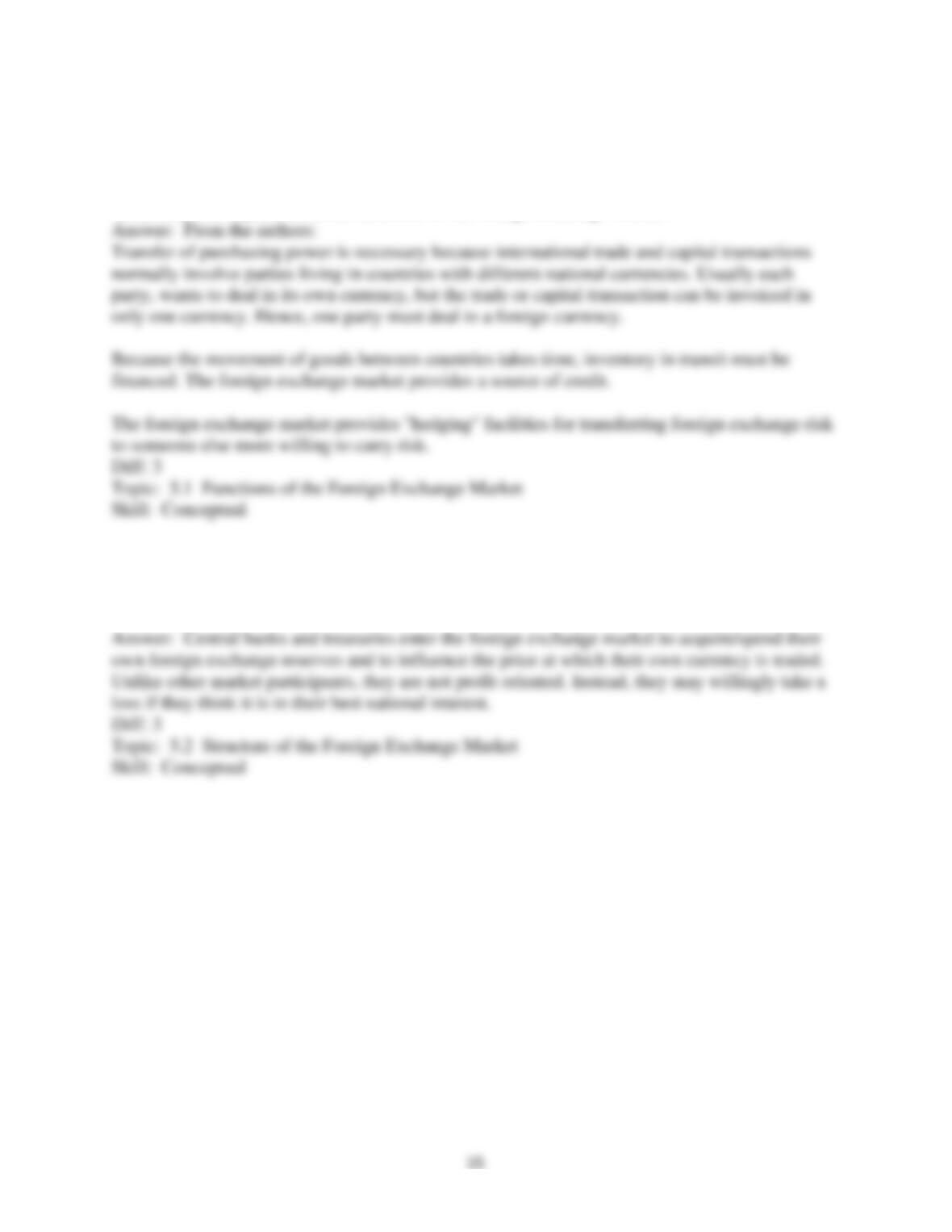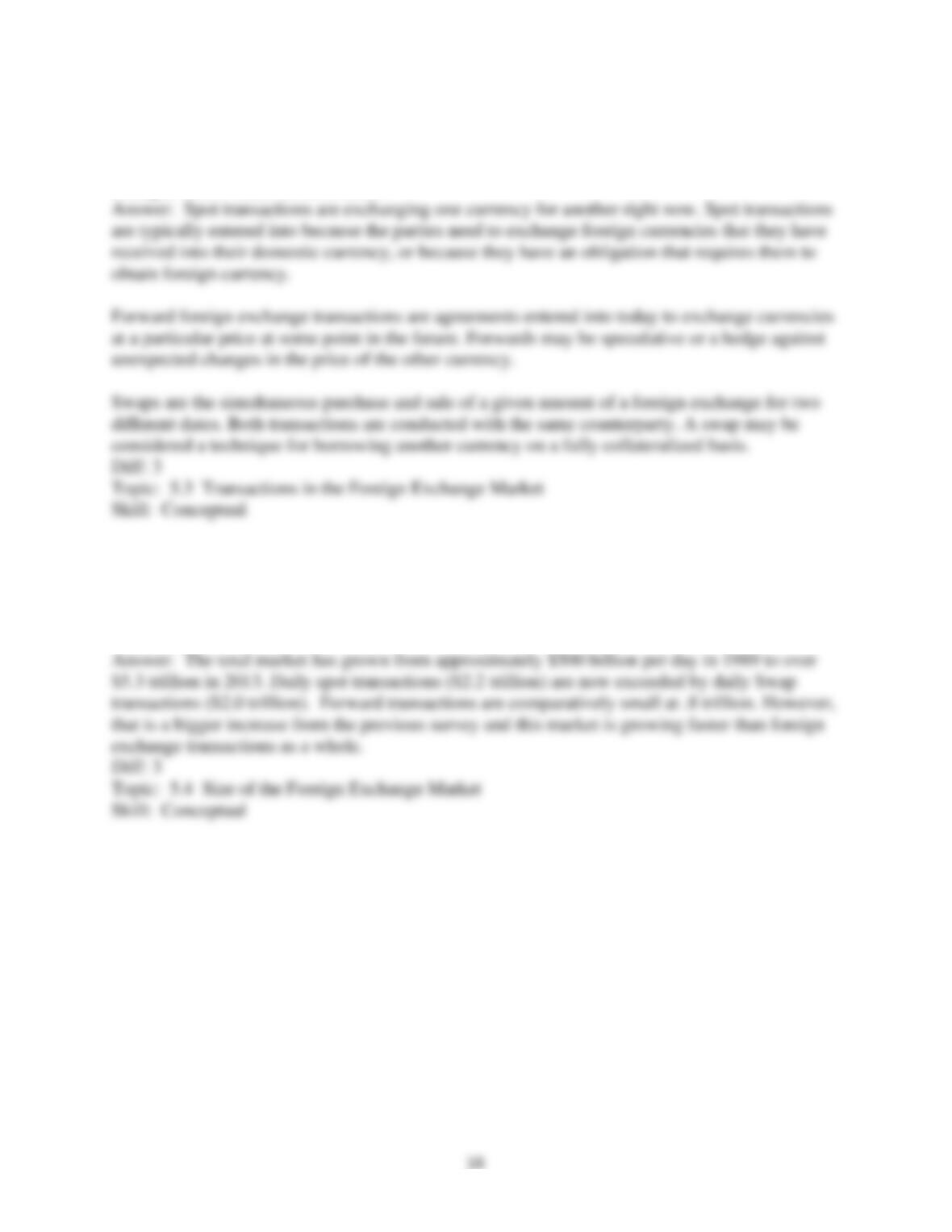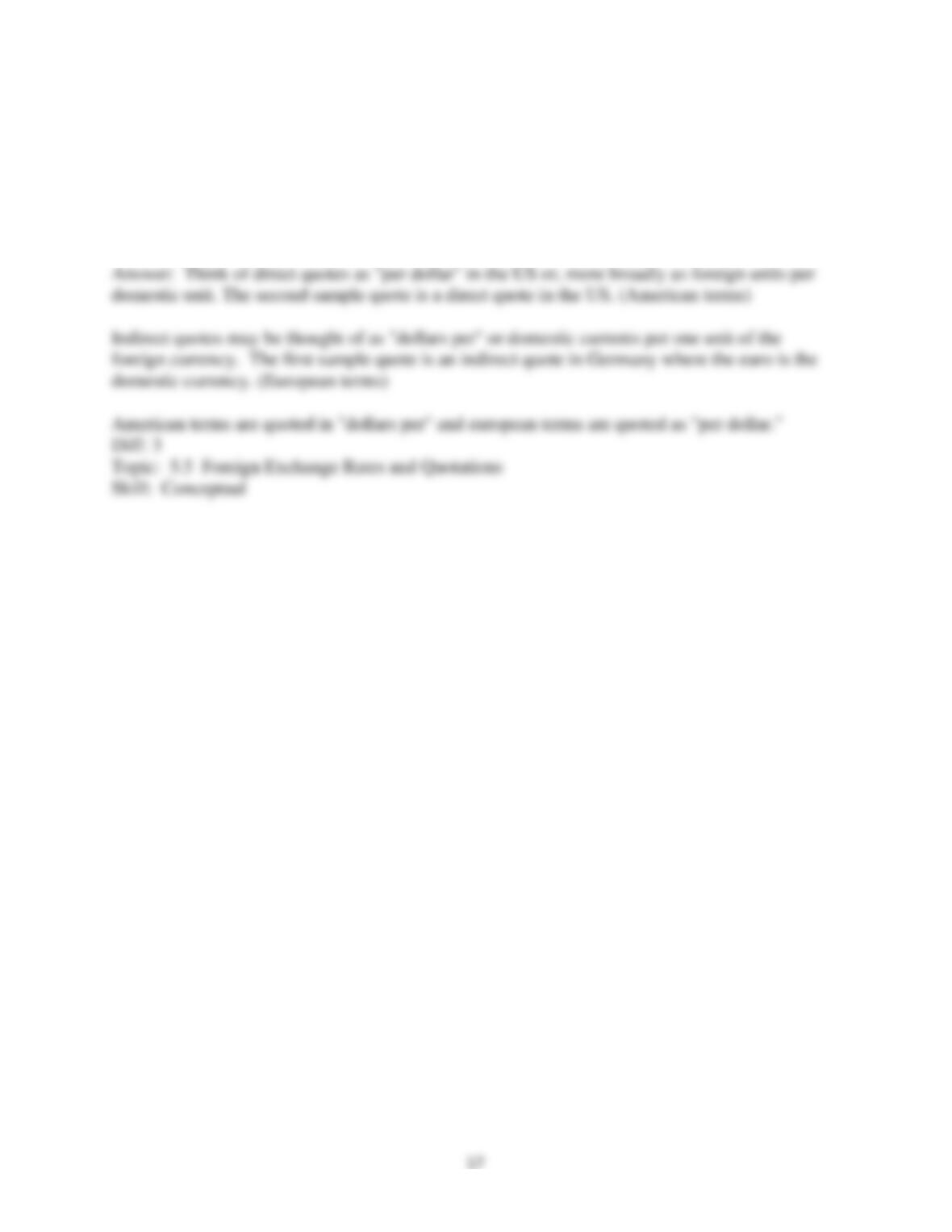5.2 Structure of the Foreign Exchange Market
1) The authors identify two tiers of foreign exchange markets
A) bank and nonbank foreign exchange.
B) commercial and investment transactions.
C) interbank and client markets.
D) client and retail market.
2) Which of the following is NOT true regarding the market for foreign exchange?
A) The market provides the physical and institutional structure through which the money of one
country is exchanged for another.
B) The rate of exchange is determined in the market.
C) Foreign exchange transactions are physically completed in the foreign exchange market.
D) All of the above are true.
3) A/An ________ is an agreement between a buyer and seller that a fixed amount of one
currency will be delivered at a specified rate for some other currency.
A) Eurodollar transaction
B) import/export exchange
C) foreign exchange transaction
D) interbank market transaction
4) While trading in foreign exchange takes place worldwide, the major currency trading centers
are located in
A) London, New York, and Tokyo.
B) New York, Zurich, and Bahrain.
C) Paris, Frankfurt, and London.
D) Los Angeles, New York, and London.
